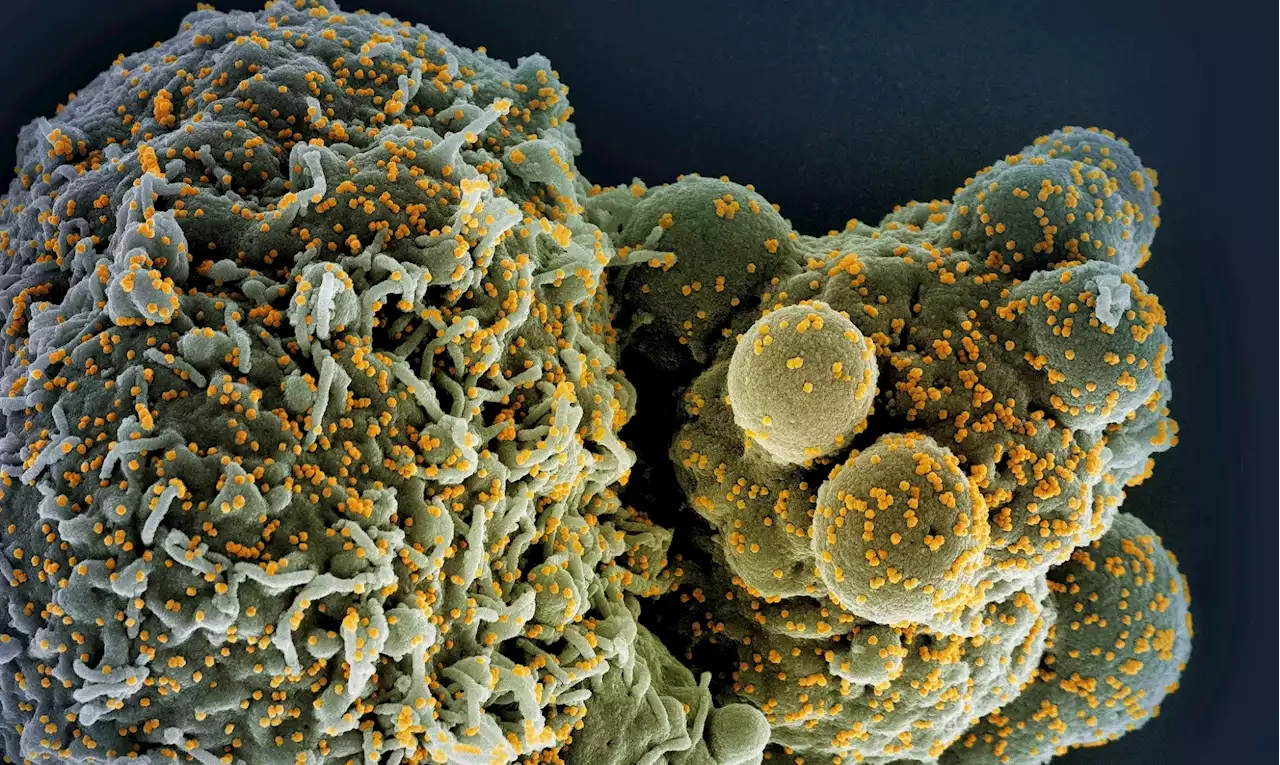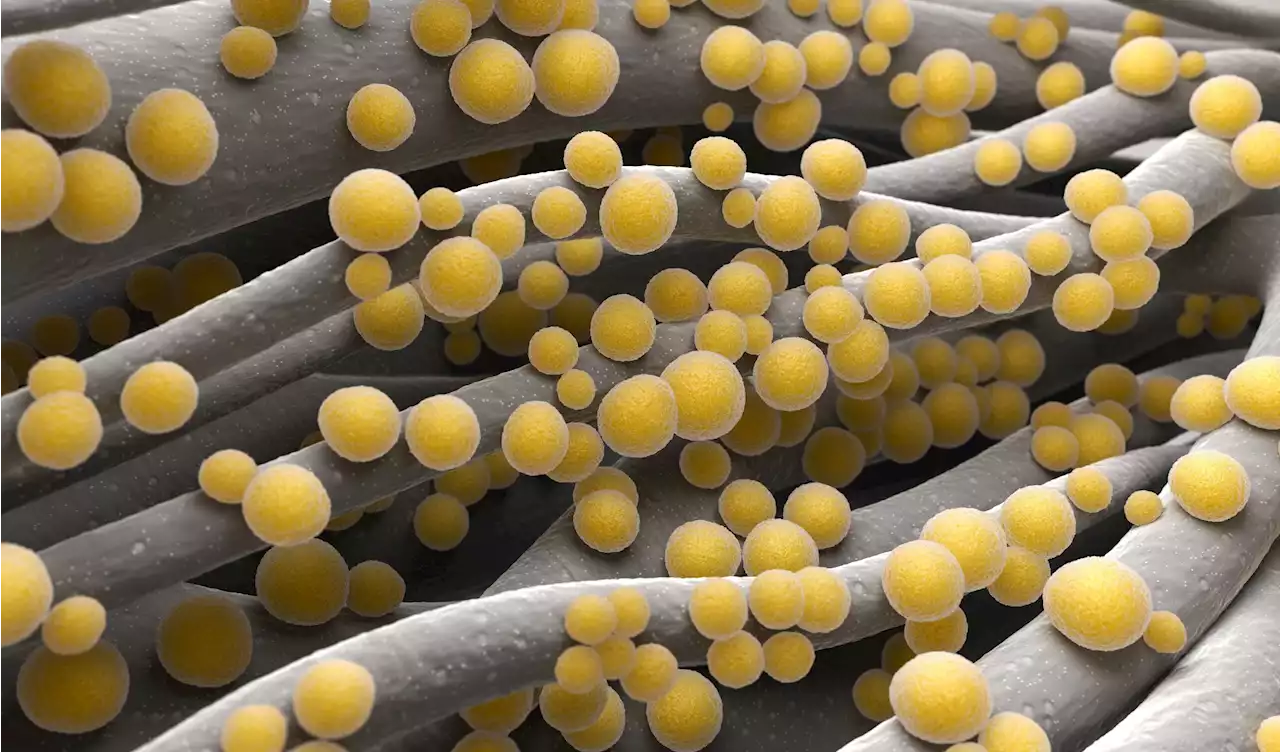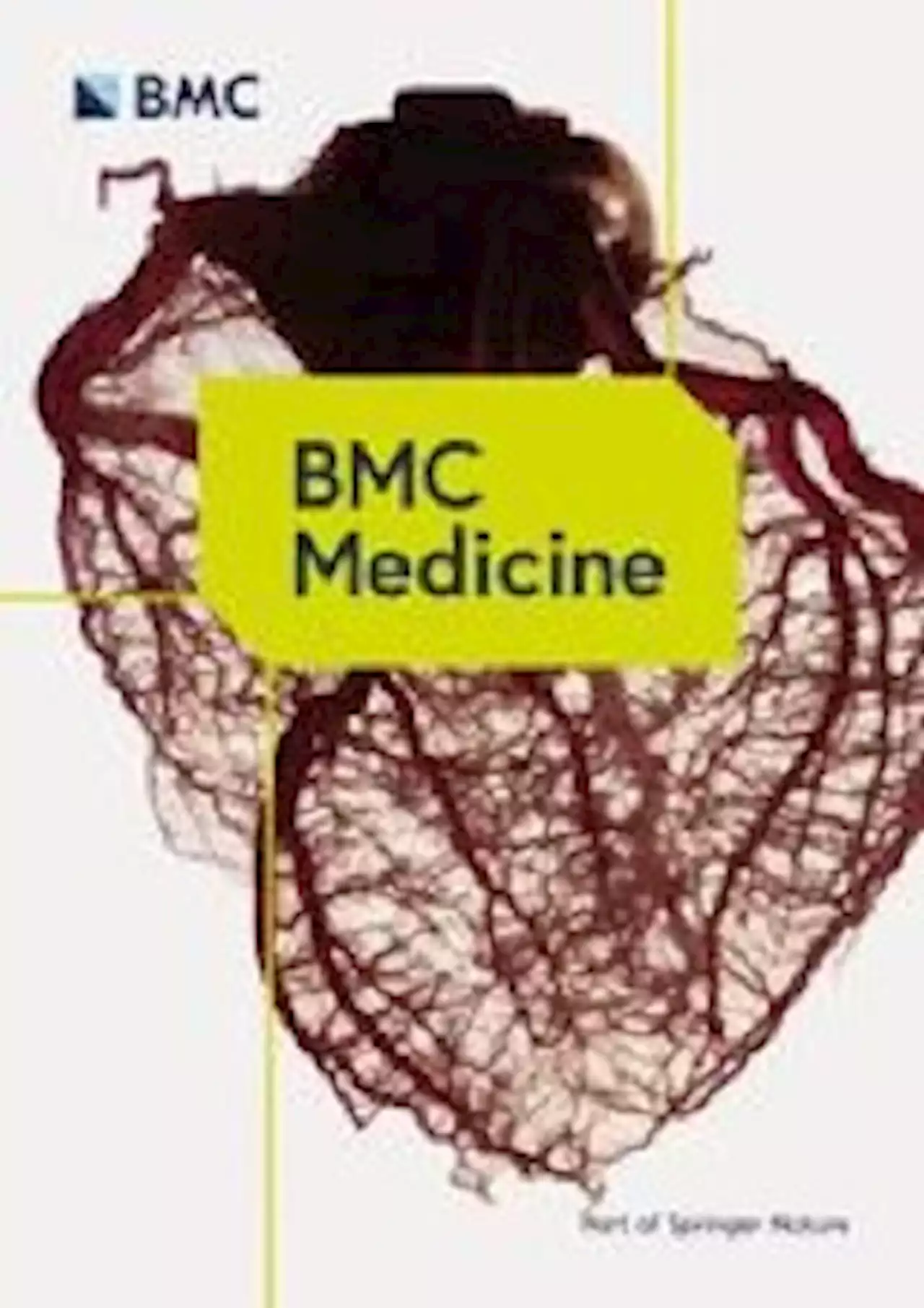Study identifies an unknown SARS-CoV-2 lineage on three mink farms in Poland PIWet_PIB Eurosurveillanc mink minkfarms mink zoonosis transmission cryptic lineage publichealth
By Neha MathurApr 24 2023Reviewed by Lily Ramsey, LLM In a recent study published in the Eurosurveillance Journal, researchers detected a cryptic severe acute respiratory syndrome coronavirus 2 lineage on mink farms in Poland.
However, Poland's number of mink farms decreased dramatically, from 350 to 166, between 2019 and 2023. Issues with pelt import and declining demand for fur worldwide drove this decline. The team collected samples to perform whole genome sequencing , the sample size of which detected between 50% and 5% prevalence, respectively, with 95% confidence. WGS helped the researchers gather data on changes in SARS-CoV-2 genomes detected in minks.
The viruses detected on mink farms were nearly identical, but with several mutations not found in the Wuhan-Hu1 strain and human B.1.1.307 SARS-CoV-2, including F486L and N501T in the spike , which suggested viral evolution in minks. The researchers observed that all three SARS-CoV-2-positive farms had a concrete fence 1.8 m high with no holes for wild animals to enter. However, trees on both sides that reached across provided a potential route for entry into farms.
United Kingdom Latest News, United Kingdom Headlines
Similar News:You can also read news stories similar to this one that we have collected from other news sources.
 Novel self-amplifying RNA vaccine confers durable protection against COVID-19, reduces viral shedding in primate studyNovel self-amplifying RNA vaccine confers durable protection against COVID-19, reduces viral shedding in primate study Viral vaccines AntibodyResponse SARSCoV2 Boosterdoses Viralload COVID PLOSPathogens
Novel self-amplifying RNA vaccine confers durable protection against COVID-19, reduces viral shedding in primate studyNovel self-amplifying RNA vaccine confers durable protection against COVID-19, reduces viral shedding in primate study Viral vaccines AntibodyResponse SARSCoV2 Boosterdoses Viralload COVID PLOSPathogens
Read more »
 Study does not find ‘short breaks induce mental exhaustion’ - Full FactSeveral publications incorrectly reported that taking short breaks at work induces mental exhaustion. But the study this comes from found that short breaks did not prevent mental exhaustion for participants working for seven consecutive hours.
Study does not find ‘short breaks induce mental exhaustion’ - Full FactSeveral publications incorrectly reported that taking short breaks at work induces mental exhaustion. But the study this comes from found that short breaks did not prevent mental exhaustion for participants working for seven consecutive hours.
Read more »
 Study reveals CMPK-2 protein-coding gene as a potent inhibitor of flavivirusesStudy reveals CMPK-2 protein-coding gene as a potent inhibitor of flaviviruses Gene Protein Zika Virus flavivirus CMPK2 Mitochondria Flaviviruses Luciferase Transfection Dengue PLOSPathogens
Study reveals CMPK-2 protein-coding gene as a potent inhibitor of flavivirusesStudy reveals CMPK-2 protein-coding gene as a potent inhibitor of flaviviruses Gene Protein Zika Virus flavivirus CMPK2 Mitochondria Flaviviruses Luciferase Transfection Dengue PLOSPathogens
Read more »
 Study reveals alarming global burden of antimicrobial resistance in bacterial infectionsStudy reveals alarming global burden of antimicrobial resistance in bacterial infections AntimicrobialResistance AMR GlobalHealth PublicHealth InfectiousDiseases BacterialInfections Healthcare Research DataGaps TheLancet
Study reveals alarming global burden of antimicrobial resistance in bacterial infectionsStudy reveals alarming global burden of antimicrobial resistance in bacterial infections AntimicrobialResistance AMR GlobalHealth PublicHealth InfectiousDiseases BacterialInfections Healthcare Research DataGaps TheLancet
Read more »
 Association between prolonged corticosteroids use in COVID-19 and increased mortality in hospitalized patients: a retrospective study with inverse probability of treatment weighting analysis - Critical CareBackground Previous studies have demonstrated a beneficial effect of early use of corticosteroids in patients with COVID-19. This study aimed to compare hospitalized patients with COVID-19 who received short-course corticosteroid treatment with those who received prolonged-course corticosteroid treatment to determine whether prolonged use of corticosteroids improves clinical outcomes, including mortality. Methods This is a retrospective cohort study including adult patients with positive testing for Sars-CoV-2 hospitalized for more than 10 days. Data were obtained from electronic medical records. Patients were divided into two groups, according to the duration of treatment with corticosteroids: a short-course (10 days) and a prolonged-course (longer than 10 days) group. Inverse probability treatment weighting (IPTW) analysis was used to evaluate whether prolonged use of corticosteroids improved outcomes. The primary outcome was in-hospital mortality. Secondary outcomes were hospital infection and the association of different doses of corticosteroids with hospital mortality. Restricted cubic splines were used to assess the nonlinear association between mortality and dose and duration of corticosteroids use. Results We enrolled 1,539 patients with COVID-19. Among them, 1127 received corticosteroids for more than 10 days (prolonged-course group). The in-hospital mortality was higher in patients that received prolonged course corticosteroids (39.5% vs. 26%, p | 0.001). The IPTW revealed that prolonged use of corticosteroids significantly increased mortality [relative risk (RR) = 1.52, 95% confidence interval (95% CI): 1.24–1.89]. In comparison to short course treatment, the cubic spline analysis showed an inverted U-shaped curve for mortality, with the highest risk associated with the prolonged use at 30 days (RR = 1.50, 95% CI 1.21–1.78). Conclusions Prolonged course of treatment with corticosteroids in hospitalized patients with COVID-19 was associated with higher mor
Association between prolonged corticosteroids use in COVID-19 and increased mortality in hospitalized patients: a retrospective study with inverse probability of treatment weighting analysis - Critical CareBackground Previous studies have demonstrated a beneficial effect of early use of corticosteroids in patients with COVID-19. This study aimed to compare hospitalized patients with COVID-19 who received short-course corticosteroid treatment with those who received prolonged-course corticosteroid treatment to determine whether prolonged use of corticosteroids improves clinical outcomes, including mortality. Methods This is a retrospective cohort study including adult patients with positive testing for Sars-CoV-2 hospitalized for more than 10 days. Data were obtained from electronic medical records. Patients were divided into two groups, according to the duration of treatment with corticosteroids: a short-course (10 days) and a prolonged-course (longer than 10 days) group. Inverse probability treatment weighting (IPTW) analysis was used to evaluate whether prolonged use of corticosteroids improved outcomes. The primary outcome was in-hospital mortality. Secondary outcomes were hospital infection and the association of different doses of corticosteroids with hospital mortality. Restricted cubic splines were used to assess the nonlinear association between mortality and dose and duration of corticosteroids use. Results We enrolled 1,539 patients with COVID-19. Among them, 1127 received corticosteroids for more than 10 days (prolonged-course group). The in-hospital mortality was higher in patients that received prolonged course corticosteroids (39.5% vs. 26%, p | 0.001). The IPTW revealed that prolonged use of corticosteroids significantly increased mortality [relative risk (RR) = 1.52, 95% confidence interval (95% CI): 1.24–1.89]. In comparison to short course treatment, the cubic spline analysis showed an inverted U-shaped curve for mortality, with the highest risk associated with the prolonged use at 30 days (RR = 1.50, 95% CI 1.21–1.78). Conclusions Prolonged course of treatment with corticosteroids in hospitalized patients with COVID-19 was associated with higher mor
Read more »
 Adverse birth outcomes and early-life infections after in utero exposure to corticosteroids for inflammatory bowel disease: a Danish nationwide cohort study - BMC MedicineBackground Systemic corticosteroids are often used to treat inflammatory bowel disease (IBD) flares during pregnancy as maintenance of disease remission is crucial to optimize pregnancy outcomes. However, there is little data regarding the effect of in utero exposure to corticosteroids on the risk of adverse birth outcomes and early-life infections in the offspring. Methods We used the Danish national registries to establish a nationwide cohort of all singleton live births in women with IBD from 1995 to 2015. Outcomes in children exposed in utero to corticosteroids were compared to those who were not exposed. In logistic and Cox proportional hazard regression models, we adjusted the outcomes (major congenital malformation, preterm birth, small for gestational age, low 5-min Apgar score, and infections) for confounders such as body mass index, smoking, comorbidity, and additional medical IBD treatment. Results After in utero exposure to corticosteroids at any time between 30 days prior to conception through the first trimester (n = 707), the adjusted hazard ratio of major congenital malformation was 1.28 (95% CI: 0.82–2.00) compared to children born to women with IBD, but not exposed to corticosteroids in utero (n = 9371). After in utero exposure to corticosteroids at any time during pregnancy (n = 1336), the adjusted odds ratios for preterm birth, small for gestational age, and low 5-min Apgar score were 2.45 (95% CI: 1.91–3.13), 1.21 (95% CI: 0.76–1.90), and 0.91 (95% CI: 0.33–2.52), respectively. Finally, the adjusted hazard ratio of overall infections in the first year of life was 1.14 (95% CI: 0.94–1.39). Conclusions This nationwide cohort study suggests that children of women with IBD exposed to corticosteroids in utero had an almost 2.5-fold increased risk of preterm birth. Use of corticosteroids is closely related to disease activity and we cannot adjust for the independent role of disease activity. It is however reassuring that the other examined birth and e
Adverse birth outcomes and early-life infections after in utero exposure to corticosteroids for inflammatory bowel disease: a Danish nationwide cohort study - BMC MedicineBackground Systemic corticosteroids are often used to treat inflammatory bowel disease (IBD) flares during pregnancy as maintenance of disease remission is crucial to optimize pregnancy outcomes. However, there is little data regarding the effect of in utero exposure to corticosteroids on the risk of adverse birth outcomes and early-life infections in the offspring. Methods We used the Danish national registries to establish a nationwide cohort of all singleton live births in women with IBD from 1995 to 2015. Outcomes in children exposed in utero to corticosteroids were compared to those who were not exposed. In logistic and Cox proportional hazard regression models, we adjusted the outcomes (major congenital malformation, preterm birth, small for gestational age, low 5-min Apgar score, and infections) for confounders such as body mass index, smoking, comorbidity, and additional medical IBD treatment. Results After in utero exposure to corticosteroids at any time between 30 days prior to conception through the first trimester (n = 707), the adjusted hazard ratio of major congenital malformation was 1.28 (95% CI: 0.82–2.00) compared to children born to women with IBD, but not exposed to corticosteroids in utero (n = 9371). After in utero exposure to corticosteroids at any time during pregnancy (n = 1336), the adjusted odds ratios for preterm birth, small for gestational age, and low 5-min Apgar score were 2.45 (95% CI: 1.91–3.13), 1.21 (95% CI: 0.76–1.90), and 0.91 (95% CI: 0.33–2.52), respectively. Finally, the adjusted hazard ratio of overall infections in the first year of life was 1.14 (95% CI: 0.94–1.39). Conclusions This nationwide cohort study suggests that children of women with IBD exposed to corticosteroids in utero had an almost 2.5-fold increased risk of preterm birth. Use of corticosteroids is closely related to disease activity and we cannot adjust for the independent role of disease activity. It is however reassuring that the other examined birth and e
Read more »
